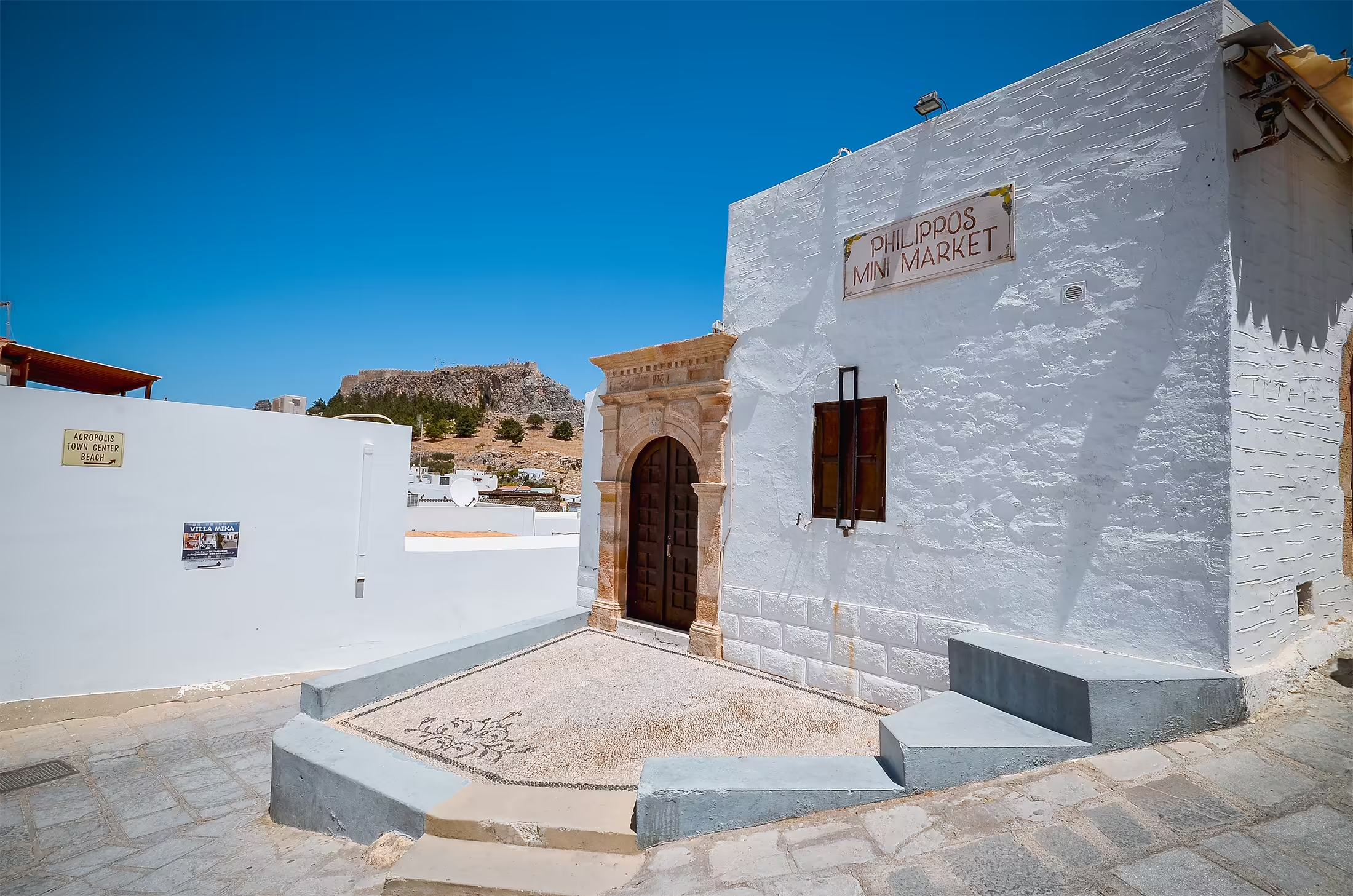
The Dodecanese islands

The Dodecanese is complex of over 163 Aegean islands and islets, of which only 26 are inhabited, situated at the most eastern part of the Greek Archipelago, at the borders of Europe. You will find here a wonderful blend of architectural styles of eastern and western cultures. The islands have a long, rich, convoluted past that starts way back, from the Mythological ages. Almost every island, even the smallest ones, are signed with traces of the glorious history: prehistoric sites, classical era temples, hellenistic ruins, medieval castles, byzantine churches and monasteries.
The modern prefecture of the Dodecanese is a subdivision of the South Aegean periphery, covering an area of 2.714 km² with 200.452 inhabitants. The most important islands are:
| Island | Capital | Area | Population |
|---|---|---|---|
| Rhodes (Rodos, Ρόδος) | City of Rhodes | 1.400,684 km² | 117.007 |
| Kos (Κώς) | Town of Kos | 290,313 km² | 30.947 |
| Karpathos (Κάρπαθος) | Pigadia | 324,800 km² | 6.511 |
| Kalymnos (Κάλυμνος) | Pothia | 134,544 km² | 16.441 |
| Leros (Λέρος) | Agia Marina | 74,172 km² | 8.207 |
| Patmos (Πάτμος) | Town of Patmos | 34,05 km² | 3.044 |
| Astypalea (Αστυπάλεα) | Town of Astypalea | 96,850 km² | 1.238 |
| Kassos (Κάσος) | Fry | 69,464 km² | 990 |
| Nisyros (Νίσυρος) | Mandraki | 41,6 km² | 948 |
| Tilos (Τήλος) | Megalo Chorio | 64,525 km² | 533 |
| Symi (Σύμη) | Town of Symi | 58,1 km² | 2.606 |
| Kastelorizo (Καστελλόριζο, Μεγίστη) | Megisti | 11,987 km² | 430 |
| Halki (Χάλκη) | Emborio | 28 km² | 313 |
| Lipsi (Λειψοί) | Megalo Chorio | 17,35 km² | 698 |
| Agathonissi (Αγαθονήσι) | Megalo Chorio | 14,5 km² | 558 |
The seat of the prefecture and the most important, historically and economically, is the island of Rhodes (Rodos, Ρόδος) and its capital city with the same name. The island of Kos is also an important center and an attractive tourist destination.
The Dodecanese islands have been inhabited since pre-Minoan times, and by the Archaic period Rhodes and Kos had emerged as the dominant islands within the group. The distance from Athens city-state gave the islands considerable autonomy. They were, for the most part, free to prosper unencumbered. Following Alexander the Great’s death, Ptolemy I of Egypt ruled the Dodecanese. The Dodecanese islanders were the first to convert into Christianity. St Paul, made two journeys to the archipelago, and St John was banished to Patmos, where he had his revelation.
The early Byzantine period saw the islands prosper, but by the 7th century AD they were plundered by a string of invaders. By the early 14th century the Knights of St John of Jerusalem, or Knights Hospitallers became the rulers of almost all the Dodecanese, building mighty fortifications, but not mighty enough to withstand the Ottoman attacks that captured Rhodes in 1522. The Italians in 1912 invaded and occupied the islands along with other possessions of the Ottoman Empire (Libya). After the Italian surrender of 1943, the islands became a battleground for Allied and German forces, with much suffering inflicted upon the population. The Dodecanese were formally returned to Greece after the end of the World War II.
The Dodecanese have a very rich flora and fauna. Numerous fossil findings show the interesting history of evolution of the animal species on the relatively isolated ecosystem of the islands. A prime example are the findings of the dwarf elephants in Tilos.
Due to their geographical position, the islands are a stopover for migrating birds. Tens of millions of these birds visit the islands each spring and autumn. The numerous caves, crevices in the rocks and high rocky formations, a typical geomorphology of the islands, serve as refuges for rare species of birds such as birds of prey, small hawks, wild pigeons, herons and cormorants. The smaller islands where both humans and animal meat eaters are absent, serve as refuges for ancient species, which have disappeared from other areas. Unique plant and animal species can be observed (especially reptiles and invertebrate), remnants of an isolated evolution and adaptation to the unique conditions.
Not surprisingly, there is a rich sea life in the Dodecanese seas. The endangered specie of the sperm whale has its home in the deep sea waters on the east of Rhodes and Karpathos, the rare Mediterranean seal finds refuge in the coastal caves, together with the dolphins, turtles, many varieties of fish, molluscs and crustaceans, form the rich ecosystem of the Dodecanese sea.
Every single island and islet can be considered a unique natural museum. Forests and bush lands of pine, cypress, wild olive, cedar, mastic, arbutus bush and holly together with a variety of annual and long lasting turf, aromatic plants (oregano, thyme, lavender), carob and olive trees, all make for a rich mosaic of plant varieties. As an example, the tiny island of Kasos boasts about 450 different plant species, which accounts more than the number of plants in the whole country of Holland.